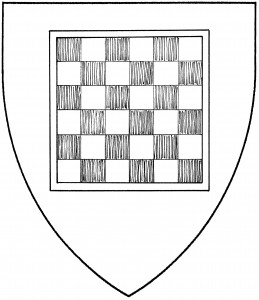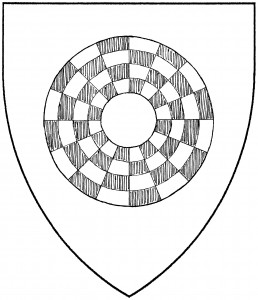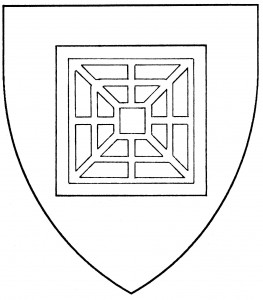A gameboard is a square or rectangular piece of wood, with a regular pattern inscribed on its surface, used for playing certain board games. In heraldry, they are usually drawn as delfs or billets fesswise with details in contrasting tinctures.
The type of game must be specified in the blazon, since each game uses a different board. For instance, the “chessboard” is found in the arms of von Pirdenhofen, c.1560 [BSB Cod.Icon 390:793]; it might be drawn with fewer than the regulation eight ranks and files. The “backgammon board”, with its pattern of triangles, is found in the arms of Pegies or Pegez, 1435 [DBA2 193]. (The game was played much as it is today, though it was called “tables” or “nardshir” in medieval times.)
Any period gameboard may be used in Society armory: examples include the “nine-man (or twelve-man) morris board”, with a pattern of squares, and the “Byzantine chess-board”, with a radial checkered pattern.
Marguerite de Villars bears: Argent, a Maltese cross between four fleurs-de-lys in saltire gules, overall a nine-man morris board saltirewise Or, marked sable.
Ryan of Rickford bears: Or, a nine-man morris board chased within an orle azure.
Coilean mac Caiside bears as a badge: A Byzantine chess-board checkered sable and argent.



